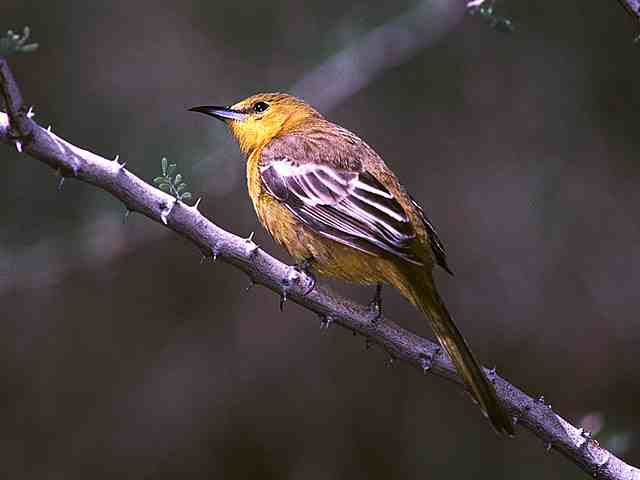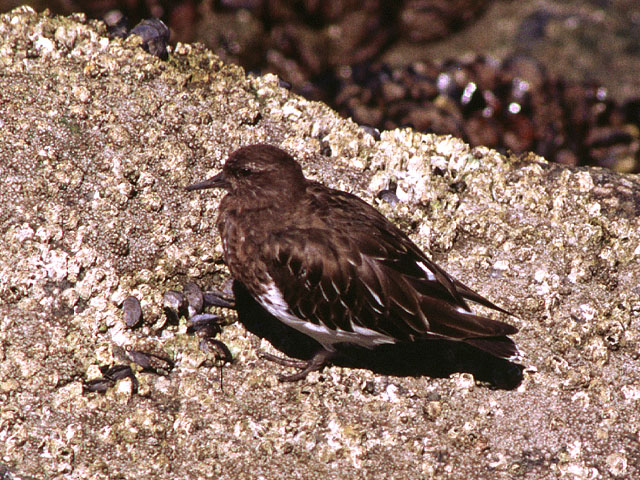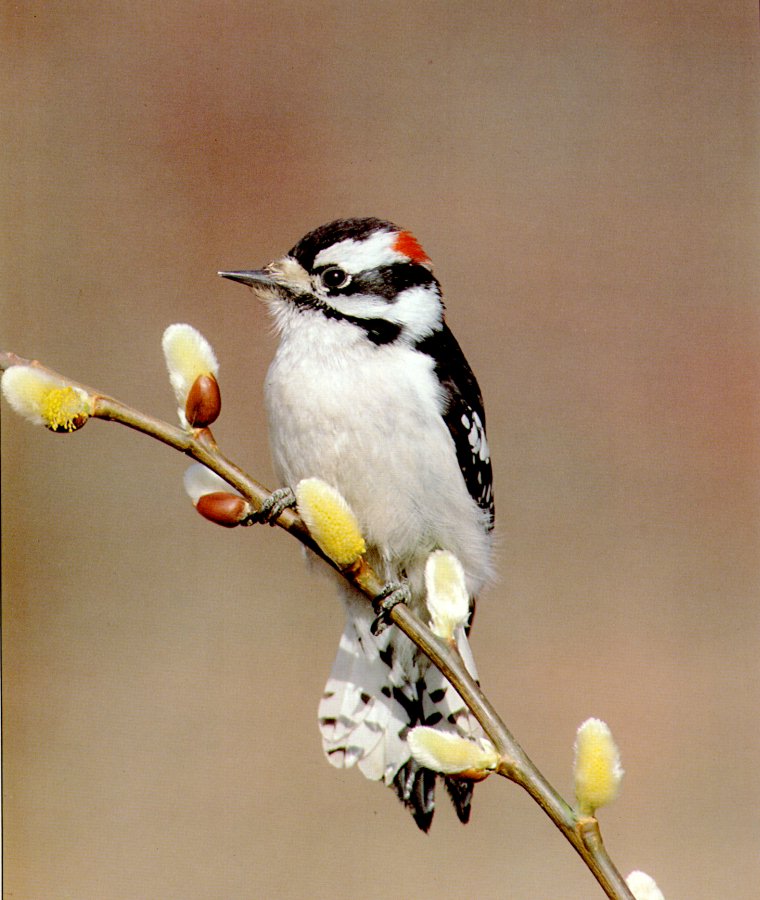Downy Woodpecker- Picoides pubescens
Probably the most familiar of the New World Woodpeckers, this small species frequents urban and suburban parks, gardens, and various forests and woodlands. The bird is patterned black-and-white, but some races have a grey or buff-grey tone, especially in the West. Males have a narrow red patch on the upper nape. The black cap is separated from a fine black moustache (that connect with the back) by a white eyebrow and a black eye stripe. The back is white and the wings are barred black-and-white. The belly is usually white and unmarked but some juveniles of both sexes present streaking on the sides and flanks. Undertail coverts show faint spots and the white outer tail feathers have two or more black bars. The bill is relatively small, in particular when compared to the closest species, the Hairy Woodpecker - Picoides villosus.

Gallery overview
Quiz Statistics
Quiz results
Rules
Hall of Fame
More links !








